By Vitek Jirinec
Related paper: Home ranges, habitat selection, and energy expenditure of Strix varia (Barred Owls): Understanding the full diel cycle matters for enhancing urban landscapes by Vitek Jirinec, Alessandra M. Bresnan, Marion A. Clément, Melanie R. Colón, Ashley M. Long, Garrett S. Rhyne, Patricia F. Rodrigues, Eliza D. Stein, Anna A. Pérez-Umphrey, Christina P. Varian, S. Tyler Williams, Sabrina S. Taylor. Ornithological Applications.
The Jamaica connection
It’s strange to think that a paper about Strix varia (Barred Owl) in Louisiana would begin in Jamaica more than 15 years ago. But that’s where this story starts. Today, I’m a research scientist with “scientist” even in my job title. Back then, though, I was just an intern, tagging along with Dr. Matt Johnson on a project tracking Setophaga caerulescens (Black-throated Blue Warbler) in Jamaican coffee farms to study their pest-control services. Dr. Johnson brought along a few of us undergrads, and we each needed a project of our own. Mine was simple—or so I thought—to record the birds’ nightly roost locations. Instead of running after a moving bird during the day, I would take one point of a sleeping fluffball somewhere in a coffee bush.
But the notion of a simple project fell apart on the first night. As Matt and I stood among the coffee bushes, we picked up a faint signal of the first tagged bird, not from the farm but from a dense tangle of forest past the farm’s edge. In fact, 80 percent of the warblers left the farms to roost in the nearby forest. The takeaway? Warblers needed those forests as much as the coffee farms they foraged in. This realization became the basis of my first scientific paper—and an important lesson in ecology: Animals often need different things from their habitats at different times. Researchers—being diurnal animals ourselves—tend to neglect what happens at night.
From warblers to thrushes
That lesson stayed with me. In 2012, I took it to Virginia, where I tracked Hylocichla mustelina (Wood Thrush) for my graduate thesis. Just like the warblers in Jamaica, these thrushes had separate needs at different times; their daytime and nighttime ranges overlapped little, and they selected denser vegetation to roost in. Again, it became clear that for a better understanding of an animal’s habitat, you need to work both day and night. If you tracked me during the day only, you’d likely conclude that an office computer is critical to my habitat requirements. It is (sadly), but you’d never know that I also need a bed, a kitchen, and maybe a trip to the local brewery.
Barred Owls of Baton Rouge
Fast forward a few years, and I was deep into my Ph.D. work at Louisiana State University in Baton Rouge. Originally, my research was focused on Amazonian birds, but a unique side project came up closer to home. My advisor Dr. Phil Stouffer and his colleague, Dr. Sabrina Taylor had leftover GPS tags from a study in Africa. They recruited me for my experience with bird tracking and we decided to study S. varia, a large raptor that is surprisingly little known in urban environments. This was a project I couldn’t pass up—night bird research was my thing and roosting diurnal birds to nocturnal birds was a natural transition. What’s more, night work didn’t interfere with classes, committee meetings, or dissertation writing.
Our objectives were to understand how S. varia in Baton Rouge used their space, selected their habitats, and managed their energy—and how all of this differed between day and night (my specialty). But before we could gather any data, we had to actually catch the owls, and that was no simple feat.
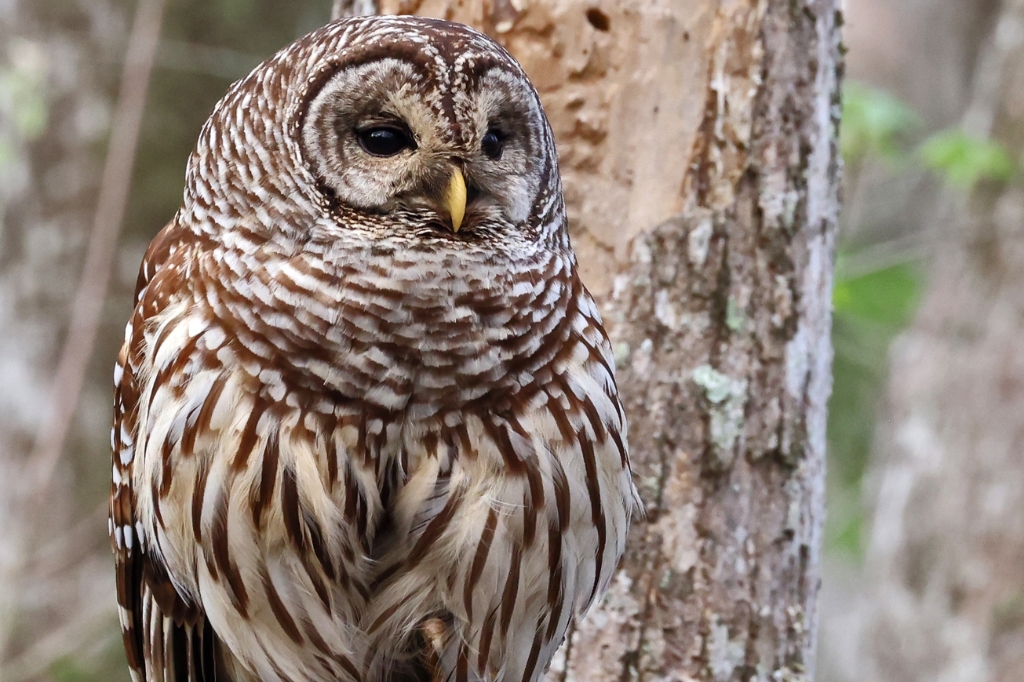
Learning the ropes
How do you catch an owl? In the early days, we tried various strategies. At first, we broadcasted territorial owl vocalizations to draw them in. One night, as I held the speaker, a bird came in fast—too fast. It nailed me right on the scalp, knocking my headlamp into the bushes behind me. That was the end of hand-held speakers. It was also the beginning of our naming scheme for these subjects—these included Ragnar, Hades, and Kraken, although these have been later changed to more scientifically appropriate ID-10, ID-27, and ID-36.
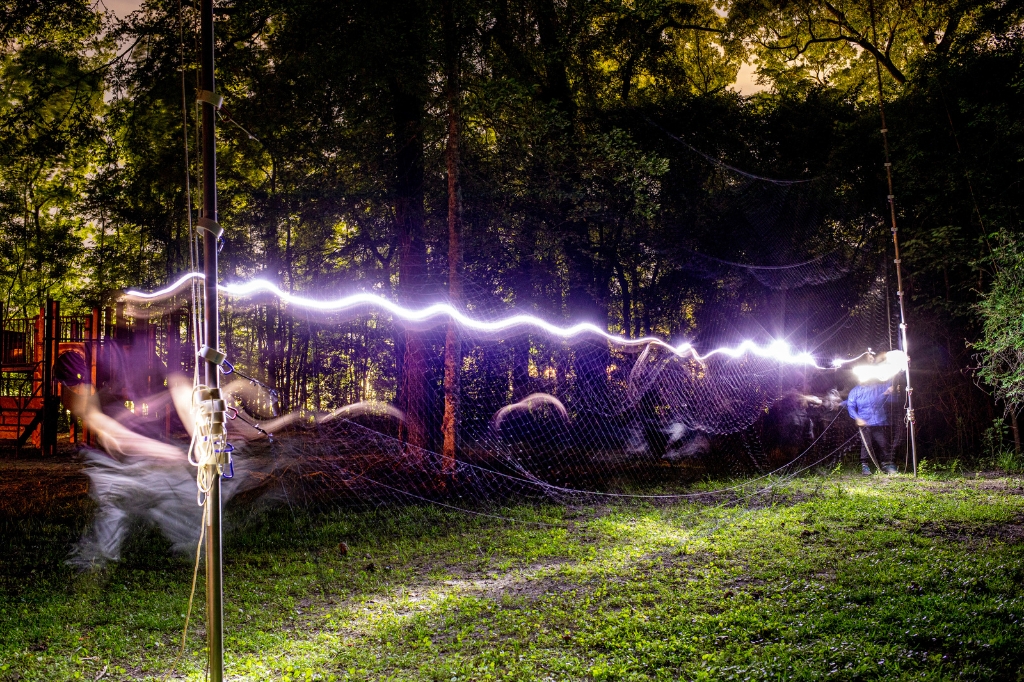
To actually catch the birds, we tried traps baited with live mice (Bal-Chatris), then mist nets with a plush “Judas Owl” decoy. The decoy didn’t fool many, but eventually, a system of high nets and speakers on either side began working, and we started catching owls consistently. Once in hand, each owl was fitted with a GPS-accelerometer tag, allowing us to follow their movements and monitor their energy-use around the clock.
Naturally, we captured owls after dark around Baton Rouge—Louisiana’s capital—working in parks, university land, and on private property (with landowner permission, of course). Only once did we run into trouble. One night, our access permissions must not have been fully communicated, because suddenly a group of law enforcement officers jumped out of the bushes, clearly expecting to bust a drug deal. I think they were even more surprised than we were when they found us clutching not bags of cocaine, but a large owl.
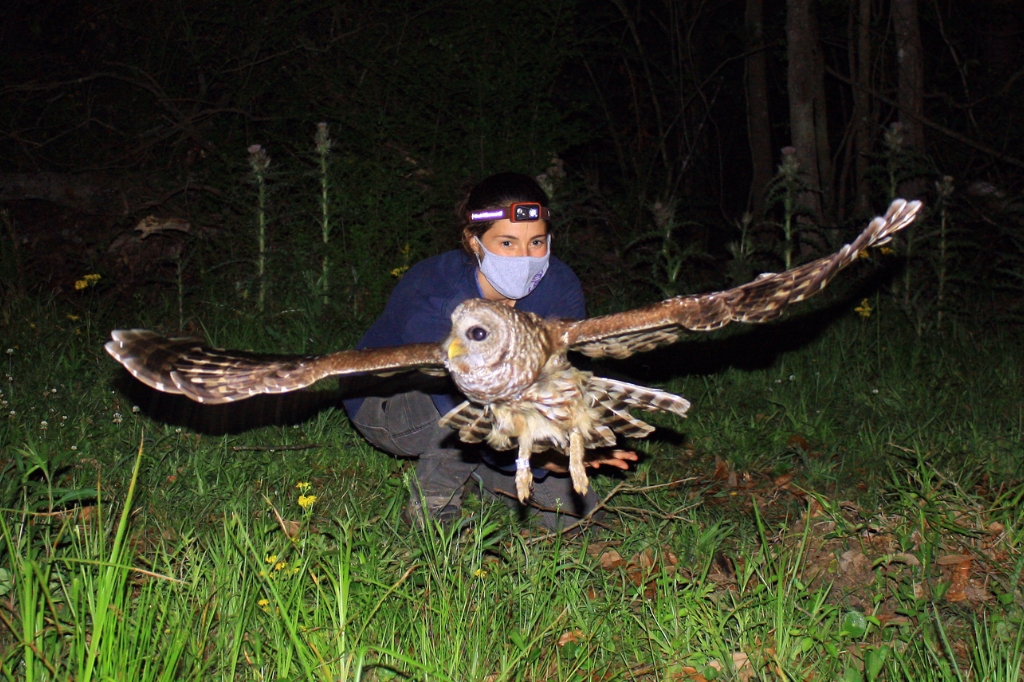
Uncovering the nocturnal and diurnal lives of urban owls
Our tagged owls revealed some fascinating patterns. Much like the warblers in Jamaica, these owls of Baton Rouge had distinct habitat needs by day and night. During the day, they kept to smaller areas. At night, though, their home ranges expanded fourfold as they flew across the city in search of food—anything from rats to crawfish. In fact, 33 percent of Baton Rouge consisted of preferred nocturnal habitat, compared to only 5 percent of preferred diurnal habitat. This suggested that owl presence in backyards might be constrained by their daytime habitat needs. We also found that owls that had better habitat within their home range tended to have smaller ranges and expended less energy—a classic pattern in ecology, where animals optimize maximizing energy gain and minimizing energy loss. But this pattern only held at night—a point that would be missed by only looking at the active phase of the owl.
Our study also revealed a strong connection between preferred owl habitat and affluence in Baton Rouge, especially at night. Wealthier neighborhoods provided better owl habitat, likely due to the abundance of parks, larger yards with mature trees, and expansive green spaces. This phenomenon, known as the “luxury effect”, describes how affluent areas often support greater biodiversity. Baton Rouge, with its stark income disparity—where in 2022, the top 20 percent of earners made over 21 times more than the bottom 20 percent—offers a clear setting to observe this effect. This finding underscores that equitable access to green spaces is not only beneficial for people but also essential for supporting urban wildlife.
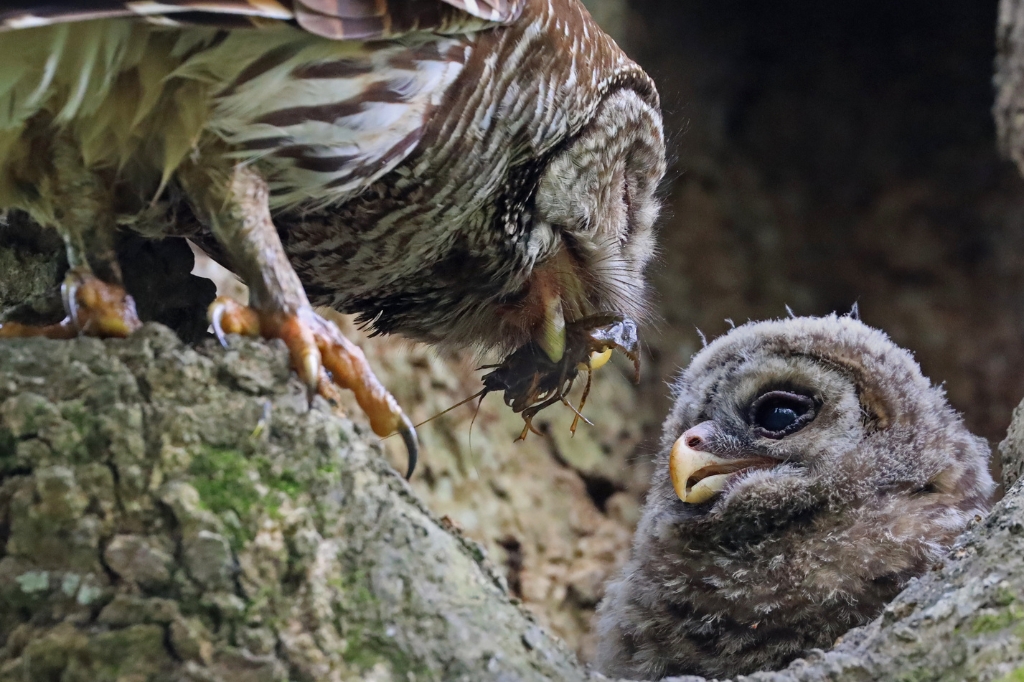
Closing the circle
Reflecting on this journey, I keep coming back to that night in Jamaica. Tracking birds at night back then taught me that to fully understand animal needs, we can’t just look at what they do during active hours. Our study on the Baton Rouge owls drives that point home.
Understanding urban ecology and planning more wildlife-friendly cities should include considering the full day-and-night cycle of animals, just as we do for ourselves. It’s a lesson that started with a little warbler in a Jamaican coffee bush, one that has shaped my research ever since—and hopefully one that can help us all think more broadly about how we share our spaces with wildlife.
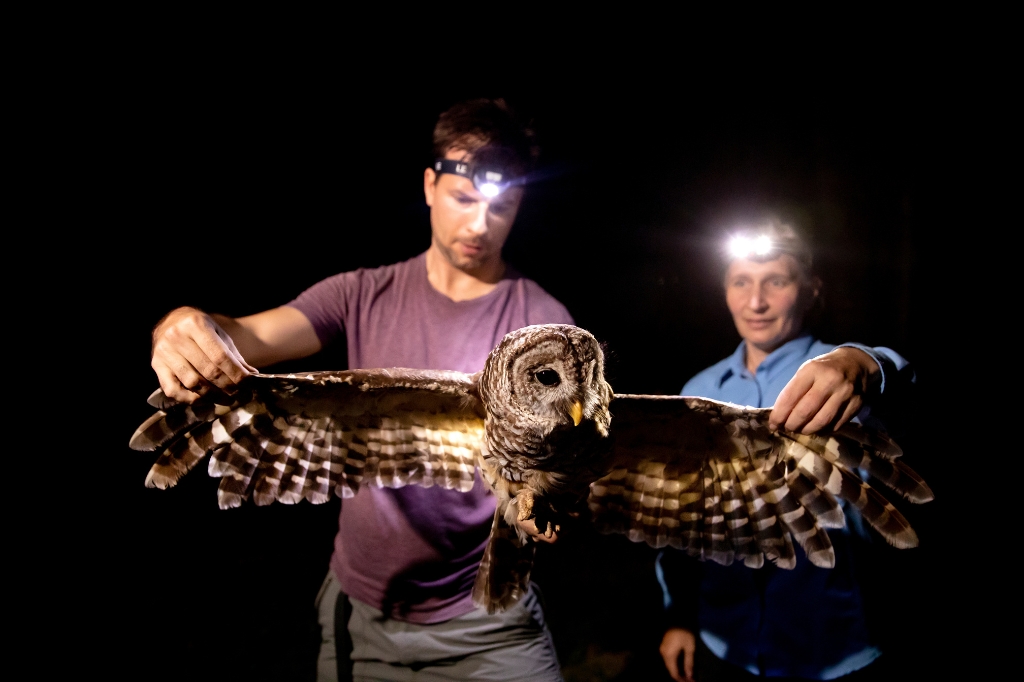
What a great article!!